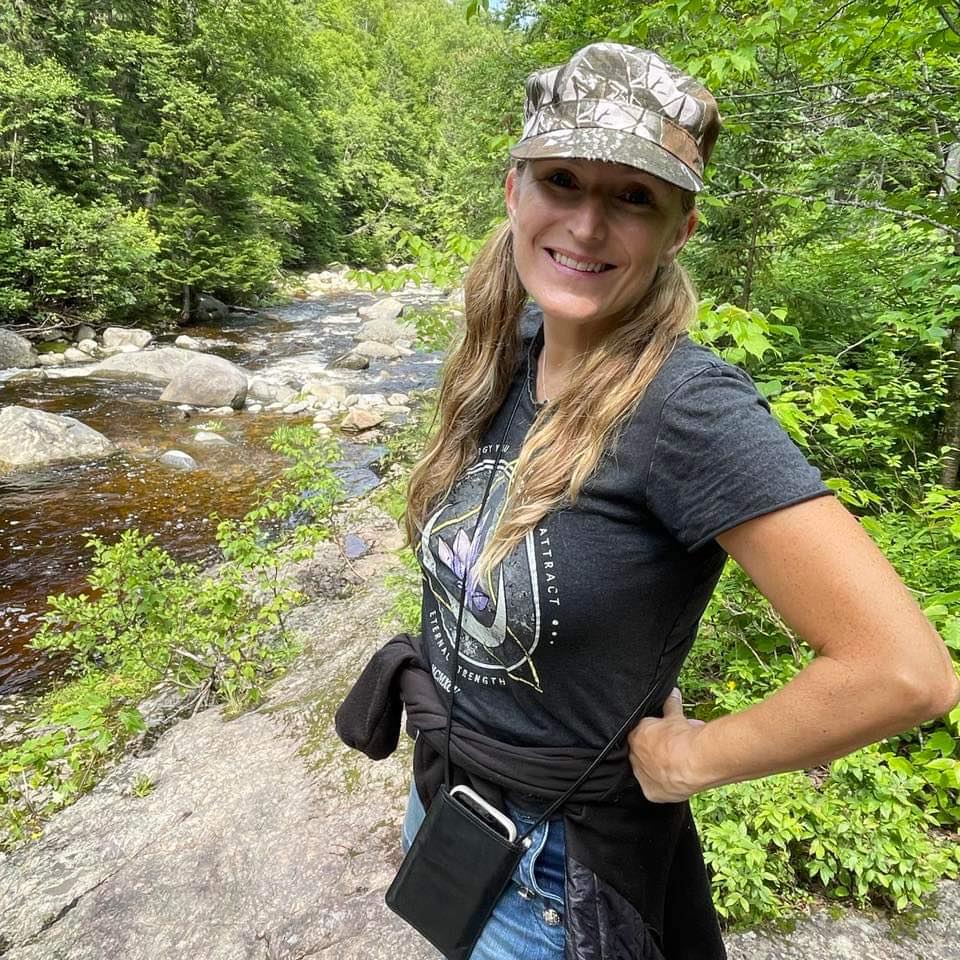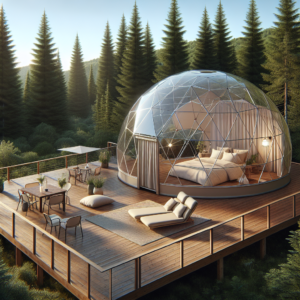
Key Takeaways
-
GeoDomes offer a sustainable solution for year-round growing in New York’s varied climate.
-
They utilize passive solar design for energy efficiency and to create an optimal growing environment.
-
By selecting the right plants and employing strategies like rotation, you can harvest fresh produce all year.
-
Building a GeoDome can be a fun and rewarding DIY project with long-term financial and environmental benefits.
-
GeoDomes serve as educational tools that inspire communities and the next generation of sustainable gardeners.
Imagine biting into a crisp, fresh salad in the dead of winter, the greens harvested just moments ago from your own garden. Sounds like a dream? Not with a GeoDome greenhouse. These ingenious structures are not just a trend; they’re a revolution in sustainable gardening, and they’re perfect for New York’s diverse climate. Let’s explore how GeoDomes can transform your gardening experience, no matter the season.
Growing Strong: GeoDomes Revolutionizing New York Agriculture
What are GeoDomes?
GeoDomes, short for geodesic domes, are spherical structures made up of a network of triangles. Their unique design offers unmatched strength and the ability to distribute stress evenly throughout the structure. This means they can withstand harsh weather conditions, which is particularly beneficial for New York’s varying climate. But it’s not just about durability; the shape of a GeoDome provides an abundance of natural light and efficient air circulation, creating an ideal environment for plants to thrive all year round.
Why New York State should embrace them
With its cold winters and hot summers, New York’s growing season can be short and unpredictable. GeoDomes extend that season by creating a controlled microclimate where you can grow a variety of plants regardless of the weather outside. They are the epitome of sustainability, relying on passive solar heating and natural ventilation, which can significantly reduce the carbon footprint associated with traditional farming methods.
The Greenhouse Effect: Maximizing Plant Health
Nourishing Plants through Innovative Design
The geodesic shape of GeoDomes isn’t just for show; it’s a powerhouse for plant health. The dome allows for even light distribution, ensuring that each plant receives the sunlight it needs. The design also promotes efficient air circulation, which helps to regulate temperature and humidity levels, minimizing the risk of plant diseases. This is crucial for New York gardeners who want to maintain a healthy and bountiful garden throughout the year.
Water Conservation Techniques
Water is a precious resource, and GeoDomes make every drop count. They can be equipped with rainwater catchment systems and drip irrigation to ensure plants receive the right amount of water without waste. This is especially important during New York’s hot summers when water conservation is a priority.
Organic Pest Management
One of the joys of GeoDomes is that they can help reduce the need for chemical pesticides. The enclosed environment makes it easier to manage pests through natural methods. Introducing beneficial insects, such as ladybugs, can help control aphid populations, and the use of companion planting can deter other pests. This means you can enjoy organic produce that’s not only healthier but also tastes better.
Rotation and Companion Planting
Getting the most out of your GeoDome means being smart about what you plant and when. Here’s where rotation and companion planting come into play. Rotating crops helps prevent soil depletion and reduces the risk of disease. By planting certain crops together – known as companion planting – you can naturally repel pests and diseases, and even enhance the growth and flavor of your veggies. For example, planting basil near tomatoes not only improves their taste but also repels flies and mosquitoes.
Example: After harvesting a round of leafy greens from your GeoDome, follow up with a planting of root vegetables. This rotation supports soil health and maximizes your yield.
Companion planting is not just about pest control; it’s about creating a harmonious ecosystem within your GeoDome. Marigolds, for instance, are not only beautiful but they also release a substance from their roots that deters nematodes, microscopic worms that can damage plant roots. Plant them around your veggies for a natural protective barrier.
Most importantly, by combining these techniques, you’re not just growing plants, you’re cultivating a thriving ecosystem that’s resilient and productive all year round.
From Dome to Home: Sustainable Living with GeoDomes
GeoDomes are more than just a place to grow food; they’re a lifestyle choice that promotes sustainability. By bringing the dome into your daily life, you embrace a future where your living space is in harmony with the environment.
Energy Efficiency at its Peak
One of the standout features of GeoDomes is their energy efficiency. The dome’s shape and the materials used allow for excellent insulation, meaning less energy is needed to heat or cool the space. This is particularly beneficial in New York, where winters can be harsh and energy costs high. The dome’s design naturally collects and retains heat from the sun during the day, releasing it slowly through the night, keeping your plants warm even when it’s snowing outside.
Therefore, by harnessing the power of passive solar energy, GeoDomes provide a sustainable way to maintain the perfect climate for your plants without relying heavily on external energy sources.
Integrating Renewable Energy Sources

Besides the natural energy efficiency of GeoDomes, you can take sustainability a step further by integrating renewable energy sources. Solar panels, for example, can be used to power any additional lighting or water pumps, making your GeoDome a beacon of green technology. You can even collect and store rainwater for irrigation, ensuring that your garden is not only self-sustaining but also kind to the environment.
The Science Behind GeoDomes
Design Principles
The genius of GeoDomes lies in their design. Based on the principles of American architect Buckminster Fuller, the geodesic dome is a structure composed of a complex network of triangles. These triangles create a self-supporting framework that gives the dome incredible strength while using minimal materials. This efficiency in design not only makes GeoDomes cost-effective but also environmentally friendly, as it reduces the amount of resources needed for construction.
Climate Control Capabilities
GeoDomes excel in climate control, a crucial aspect for year-round growing. The transparent panels of the dome allow for maximum sunlight exposure, while the shape ensures even distribution of heat. Vents can be strategically placed to take advantage of natural convection currents, allowing hot air to escape and cool air to enter, maintaining a stable temperature inside the dome. This creates an ideal growing environment for a wide range of plants, from tropical species to traditional vegetable crops.
Step into the Future: Building Your GeoDome
Choosing the Right Location
Before you start building your GeoDome, you need to select the perfect spot. Look for a location that receives ample sunlight, has good drainage, and is protected from strong winds. The orientation of the dome is also important; in the Northern Hemisphere, positioning the entrance towards the south maximizes sun exposure. Remember, the location you choose will have a significant impact on the success of your garden.
Gathering Materials and Tools
Building a GeoDome is an exciting project, and with the right materials and tools, it’s entirely achievable. You’ll need a geodesic dome kit, which typically includes the frame, polycarbonate panels, hardware, and possibly even automated vents and shading. Additionally, gather basic construction tools such as wrenches, drills, and ladders. Make sure to also have gloves and safety glasses for protection during the build.
Example: When purchasing your GeoDome kit, opt for UV-resistant polycarbonate panels. They provide excellent light transmission and durability, ensuring your dome stands strong for years to come.
With all your materials at the ready, you’re set to start the construction of your very own sustainable oasis.
The Construction Process
The construction of a GeoDome is a straightforward process, especially with a kit. Start by laying a solid foundation; this can be a wooden deck or a concrete pad, depending on your preference and the size of the dome. Next, assemble the frame according to the instructions, ensuring all connections are secure. Then, attach the polycarbonate panels, which are usually designed to fit snugly into the frame. Finally, add any additional features like doors, vents, and shading, and your GeoDome is ready for planting!
Building a GeoDome is not just about constructing a greenhouse; it’s about creating a sustainable future for yourself and your community. With every plant you grow and every seed you sow, you’re taking a step towards a greener world. And remember, the journey doesn’t end with the build. It’s a continuous process of learning, growing, and sharing your experiences with others.
Long-term Financial Benefits
Investing in a GeoDome might seem like a big step, but let’s break down the long-term financial benefits. Firstly, consider the savings on your grocery bill. By growing your own produce, you’re cutting out the middleman and the transportation costs associated with store-bought food. Moreover, the durability of GeoDomes means you’re investing in a structure that will last for decades with minimal maintenance costs. And don’t forget the potential to sell your surplus produce or even start a plant nursery as a side business. In New York, where local and organic produce is in high demand, this can be quite lucrative.
Community Impact: GeoDomes as Educational Tools

GeoDomes have the potential to make a significant impact on communities, especially in educational settings. Schools across New York can use these structures as living classrooms, where students learn about botany, ecology, and sustainability firsthand. The hands-on experience of growing and tending to plants is invaluable, fostering a connection with nature and an understanding of where food comes from.
Inspiring the Next Generation
When children and teens have access to a GeoDome, they’re not just learning about plants; they’re being inspired to think about the future of food and the environment. This kind of education is vital in shaping the next generation of eco-conscious citizens. They learn that sustainable living is not just possible but also enjoyable and rewarding. Plus, they gain practical skills in gardening and an appreciation for the work that goes into producing food.
GeoDomes for Community Gardens
Community gardens are a fantastic way to bring people together, and GeoDomes can take these spaces to the next level. In a state like New York, where urban space is at a premium, a GeoDome maximizes the area available for growing. It can become a hub for community events, workshops, and a place for urban dwellers to connect with nature and each other. The benefits are social as well as environmental, creating a ripple effect of well-being and sustainability throughout the community.
FAQs
Are GeoDomes suitable for urban farming?
Absolutely! GeoDomes are incredibly versatile and can be installed in a variety of urban settings. They require less ground space than traditional greenhouses for the same growing area, thanks to their vertical structure. This makes them ideal for rooftop gardens, community plots, and even schoolyards. Plus, their unique appearance can add an aesthetic appeal to city spaces.
How do GeoDomes handle extreme weather conditions?
GeoDomes are designed to be incredibly resilient. Their geodesic shape evenly distributes stress, allowing them to withstand heavy snow, strong winds, and even hail. The materials used, typically polycarbonate panels, are durable and impact-resistant. This makes GeoDomes an excellent choice for New York’s unpredictable weather, ensuring your garden stays protected year-round.
Can I automate processes in a GeoDome greenhouse?
You certainly can. Many GeoDome owners choose to automate systems such as irrigation, ventilation, and even temperature control. This not only saves time but also optimizes the growing conditions for your plants. Automation can be as simple as a timer for watering or as advanced as sensor-based systems that adjust conditions in real-time.
-
Timed drip irrigation systems ensure plants receive water consistently.
-
Automated vents can open or close based on temperature and humidity levels.
-
Solar-powered fans can help maintain air circulation.
By automating these processes, you’re ensuring that your plants receive the care they need, even when you’re not around.
What is the expected lifespan of a GeoDome?
When properly maintained, a GeoDome can last for more than 25 years. The frame, typically made of steel or aluminum, is designed to endure the elements. The polycarbonate panels are UV-resistant and shatterproof, contributing to the longevity of the structure. It’s a long-term investment that pays off in years of sustainable growing.
Where can I find resources to start my own GeoDome project?
Starting a GeoDome project is an exciting endeavor, and there are plenty of resources to help you on your way. Research is key, so begin by exploring online forums and community groups where you can connect with current GeoDome owners. Many companies that sell GeoDome kits also offer workshops and detailed guides. Local agricultural extension offices and gardening clubs in New York can be valuable sources of information and support as well.




